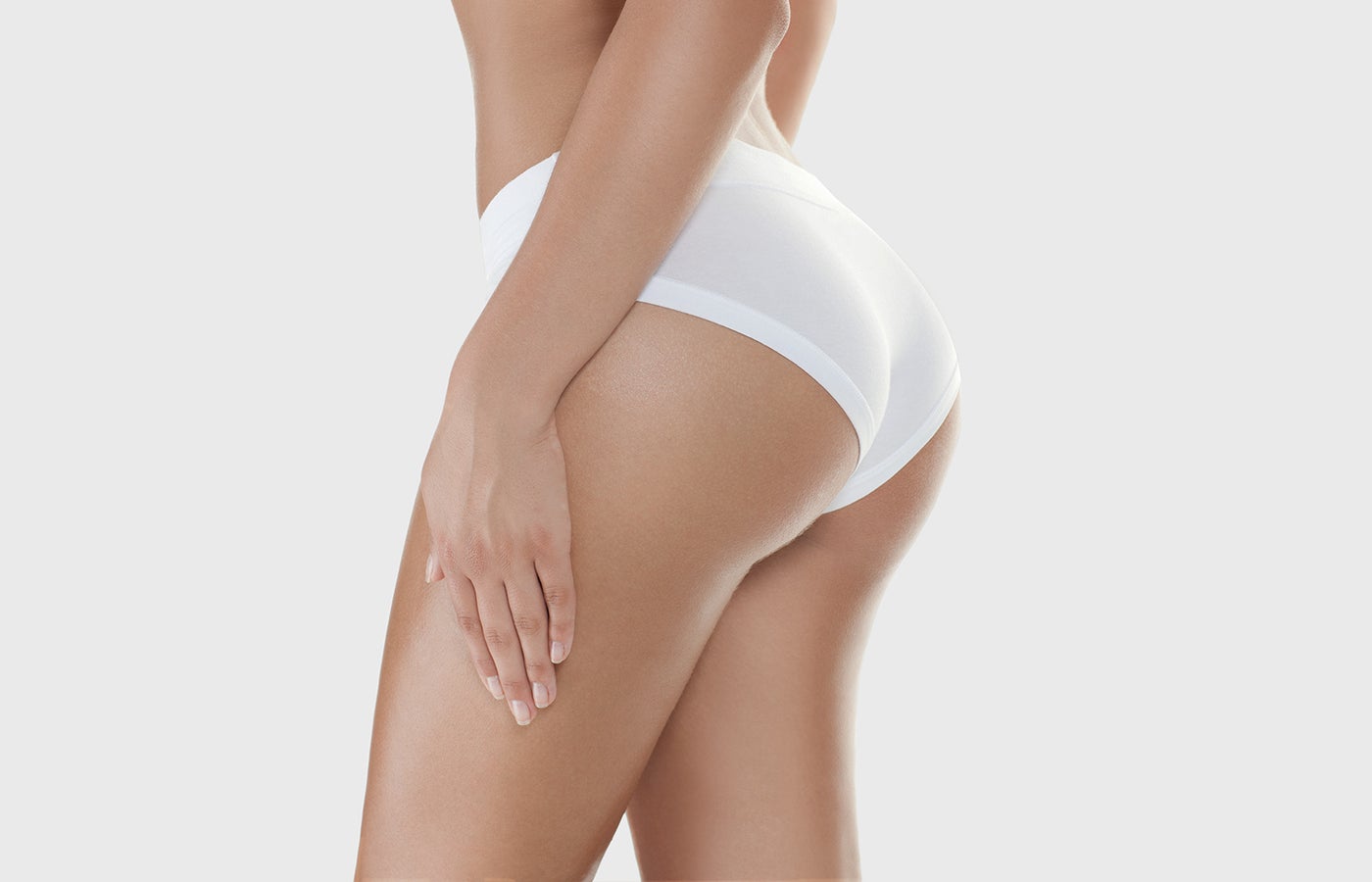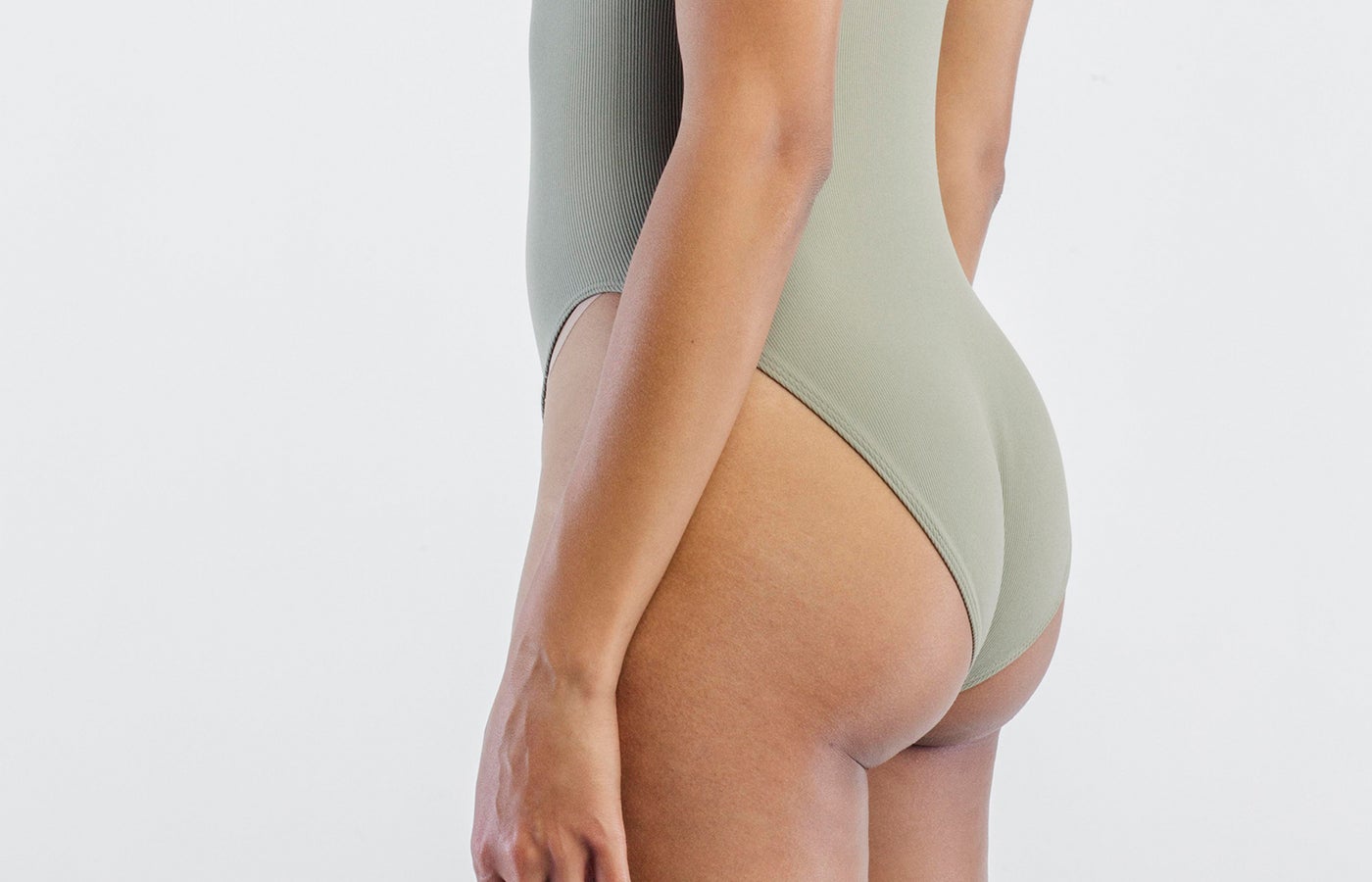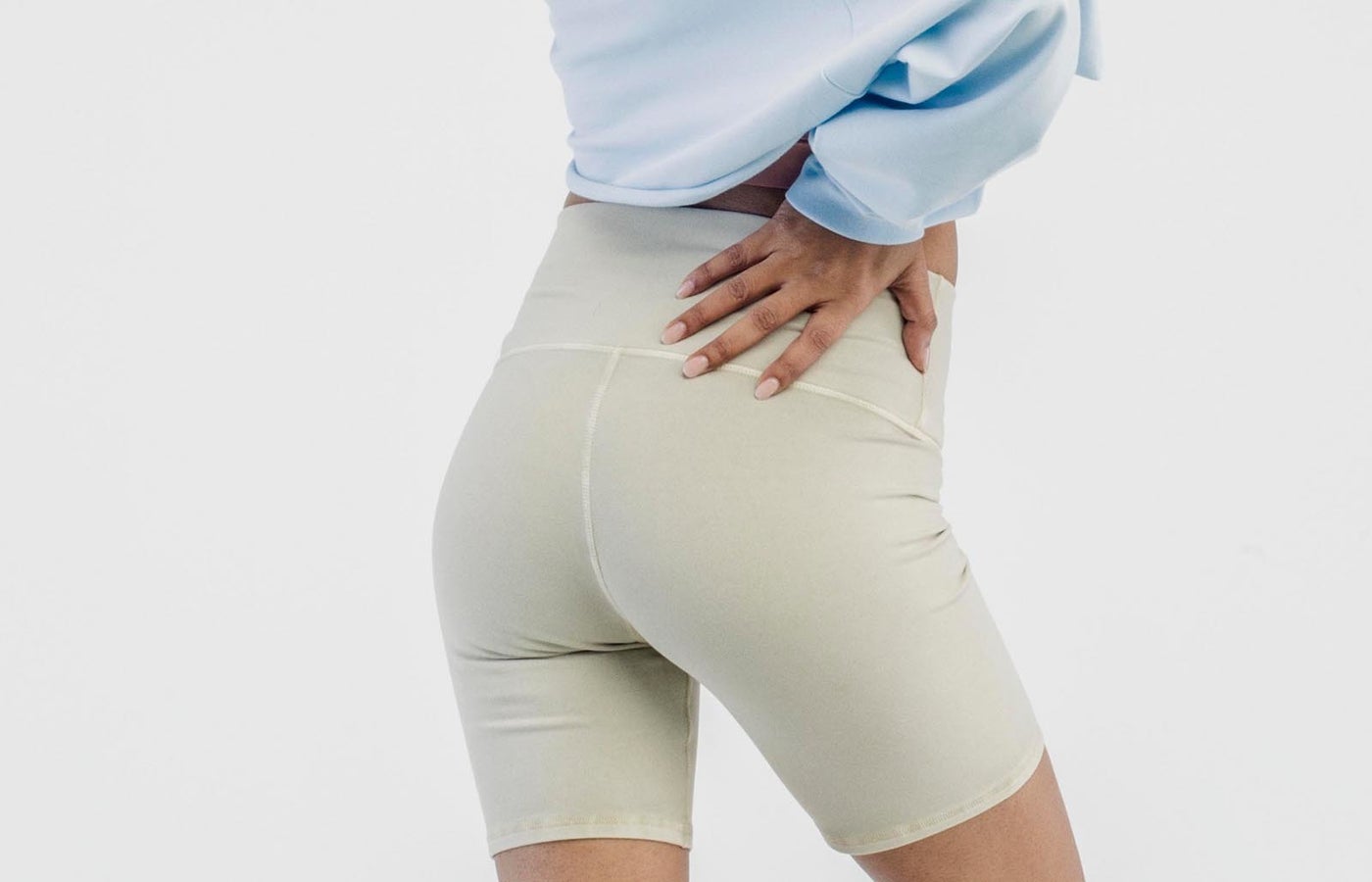BEFORE & AFTER PHOTOS
SPONSORED
Brazilian butt lift before and after photo courtesy of Dr. Jeff Angobaldo, board-certified plastic surgeon in Plano, TX. Results may vary.
Brazilian butt lift before and after photo courtesy of Dr. Jeff Angobaldo, board-certified plastic surgeon in Plano, TX. Results may vary.
Brazilian butt lift before and after photo courtesy of Dr. Jeff Angobaldo, board-certified plastic surgeon in Plano, TX. Results may vary.
Brazilian butt lift before and after photo courtesy of Dr. Jeff Angobaldo, board-certified plastic surgeon in Plano, TX. Results may vary.
A Brazilian butt lift (BBL), is a popular cosmetic procedure that uses a patient’s own fat to create a higher, rounder, and fuller butt.
During BBL surgery, a plastic surgeon:
- performs liposuction to collect excess fat from other areas of the body like the thighs, back, stomach, and flanks
- purifies the fat
- injects a portion of it into the butt cheeks (and often the hips), enhancing the size and shape of the buttocks
Dr. Matthew Schulman, a board-certified plastic surgeon in New York City, says that the Brazilian buttock lift offers two big body contouring benefits: “You’re able to get rid of unwanted fat and reshape your buttocks and hips—all without artificial injections or implants.” This combination creates an hourglass shape, with results that can be relatively subtle or dramatic.
Pros
- When the procedure is performed by a skilled, board-certified plastic surgeon, it can create flattering, natural-looking curves.
- The lipo that’s performed as a first step can contour the abdomen, love handles, lower back, thighs, and any other areas of excess fat.
- Fat that survives the transfer is there forever, so results are long-lasting (as long as you maintain a stable weight).
- When fat is injected above the fascia and muscle, this procedure is considered safe (see more about safety below).
- This augmentation procedure has a lower risk of infection than butt implants, with no potential for an allergic reaction, since your own fat is used.
- Scars from the the liposuction cannula entry points are minimal, and no other incisions are required.
- Patients are usually pleased with their results. RealSelf reviewers give Brazilian butt lifts an 85% Worth It Rating, higher than the rating given by reviewers of silicone butt implants.
Cons
- This type of plastic surgery has a reputation for being especially dangerous, due to some cosmetic surgeons’ risky techniques.
- The initial recovery takes at least two weeks, and it can be very uncomfortable (even with pain medication). You’ll need to avoid sitting and applying direct pressure to the buttocks for several weeks, to help preserve the grafted fat.
- About 40% of the transferred fat naturally gets reabsorbed by the body during the first four months post-procedure, so results can be unpredictable.
- RealSelf members who rated this buttock augmentation procedure “Not Worth It” wanted more dramatic results or had dents, lumps, or slumping that had to be corrected by BBL revision surgery (an additional expense).
- Average Cost:
- $9,193
- Range:
- $4,100 - $18,945
Your Brazilian butt lift price will depend on your surgeon’s credentials, their location, the number of areas where your surgeon performs liposuction, the type of anesthesia you get, and a few other key factors.
Most surgeons offer payment plans or accept third-party financing options, such as CareCredit.
See our complete guide to Brazilian butt lift costs
As you're choosing your surgeon, look for Brazilian butt lift pictures that show patients who had similar body types to your own, with the kind of fullness you’re looking for.
Pay attention to the butt and the 360 lipo results, with an eye for proportional, natural-looking contours across the abdomen and back, with no visible lumps, incisions, or scars.
The swooping curve from the back to the lower butt should look especially smooth, with maximum projection at the center of the buttocks.
The BBL pictures in our photo gallery have been shared by the surgeon who performed the procedure, with the patient's consent.
During your consultation, your surgeon should do a physical exam, discuss your medical history, and ensure you have realistic expectations about the outcome.
Generally speaking, good candidates for this procedure:
- Are in good health. Your provider may request medical tests or labs prior to operating.
- Have good skin tone in the buttocks and hips. If you have laxity or sagging, your provider may recommend a nonsurgical skin tightening treatment or traditional buttock lift surgery (sometimes called a butt tuck).
- Are at a stable weight, with enough fat in other areas to harvest for transfer.
For patients with a BMI below 21, a growing number of providers offer a "skinny BBL." This technique involves a smaller amount of fat transfer, to ensure a proportional result and optimal fat viability. Some use the BeautiFill system for fat harvesting and processing, which has an average fat cell viability rate of over 95%.
Before you schedule a consultation with a potential surgeon, look carefully at their before and after photo gallery. Zero in on patients that look similar to your body type. Here's what to look for in BBL photos.
BBL surgery takes 2 to 4 hours. (If your surgeon says yours will take less than 2 hours, this is a major red flag that they may be prioritizing patient volume over safety.) Every surgeon has their own technique, but here’s a run-down of what typically happens.
1. Markings and photos
- First, your surgeon will recap your goals and the results you can realistically expect.
- Your skin will be marked with a pen while you’re standing up, to delineate the areas where fat will be removed and added.
- Someone will take your “before” photos.
2. Anesthesia
- Once you’re moved to a pre-op area, an IV will be placed in your arm.
- General anesthesia should be administered through the IV. Most surgeons prefer to perform this procedure under general anesthesia because it allows patients to be fully asleep, still, and comfortable. Some RealSelf members who’ve had it with just local anesthesia and sedation say it was very painful. Using local anesthesia for long surgeries like this one also raises the potentially fatal risk of lidocaine toxicity.
3. Liposuction and fat purification
- In the operating room, your skin will be cleansed with an antiseptic surgical prep.
- Your surgeon will inject a tumescent fluid—a mix of saltwater, epinephrine, and lidocaine that reduces pain, bleeding, and bruising—in the targeted areas.
- They’ll insert the cannula (a thin tube attached to a vacuum) and suck out the fat. Some surgeons prefer to use VASER lipo or another form of energy-assisted liposuction, which can make the removal easier and more precise, with smoother contours and less damage to the surrounding tissue.
- The extracted fat is purified, to isolate the healthiest cells.
4. Fat transfer
- Your surgeon will inject fat into the tissue just below the surface of your skin to give the butt more projection, fill in hip dips, and create desired contours.
- To avoid a life-threatening fat embolism during or after the fat transfer procedure, fat must be injected above—not within or below—the muscle and fascia. Some plastic surgeons use ultrasound guidance to ensure they’re placing fat in the proper plane, while others believe it’s not necessary.
- They will continue to inject layers of fat just below the skin until they’ve achieved the desired volume and distribution, within the bounds of what’s safe.
You’ll need to have at least 250–300 cc of fat transfer per side, to see a significant difference.
It’s possible to add up to 1000cc (1.0L) of fat on each side, but the allowable volume will depend on the capacity of your butt’s soft tissues and what the skin envelope can contain. Overfilling creates constriction, and the transferred fat cells will struggle to establish a blood supply, which increases the rate of fat cell death or abscess.
If your aesthetic goal requires more fat than can be placed during one procedure, you could have a second procedure, or even third, to augment your results.
“Probably one-third of my patients come back for a second round,” says Dr. Alexander Aslani, a plastic surgeon in Marbella, Spain. “They don’t necessarily need more, but they want more.”
If you don’t have enough excess fat to create that look, your surgeon may recommend a combination of fat transfer and buttock implants to get the projection you want.
BBL recovery can take 2 to 6 weeks, depending on the extent of your lipo. Plan on taking at least 2 weeks off work—and even 4, if you can get it.
Everyone heals differently, but here’s a general recovery timeline.
- Most patients take prescription pain medication for up to 1 week before switching to over-the-counter medications. Follow your doctor’s instructions for managing post-surgery pain.
- For patients who travel, surgeons will generally give the all-clear to fly home within 2 weeks of surgery. “Assuming patients are healthy and have no preexisting risk for blood clots, the risk of a clot from flying is highly unlikely,” says Dr. Schulman. He has patients walk the aisles, when possible, to keep blood flowing, and gives them with a note to present at the airport, requesting assistance for faster boarding. Ask your surgeon to do the same.
- Walking is encouraged after surgery, but skip vigorous exercise for the first month of recovery. Once your surgeon gives you the OK, “lunges, squats and other glute exercises will enhance the result,” says Los Angeles–based, board-certified plastic surgeon Dr. Kenneth Hughes. Keep your body-fat percentage steady so you don’t lose some of your new volume.
- You’ll need to wear a compression garment, known as a faja, for up to 6 weeks to decrease bruising and inflammation and help any loose skin retract. “Too much compression can damage the liposuctioned skin and lead to so-called ‘girdle trauma’ or ‘garment burns,’” cautions Dr. Aslani. To avoid these side effects, free the skin for about an hour a day.
- It can take 6 to 8 weeks or more for post-op swelling to subside enough that the buttocks feel less tight and tender.
- Most of the swelling should have resolved within 4 months. The remaining swelling will continue to resolve over the coming months.
Keep these recovery tips in mind:
- If you're traveling for your surgery, ask these questions before you book a recovery house.
- Smoking and vaping can increase the risk of serious complications and compromise your ability to heal. Avoid all nicotine products for 6 weeks post-procedure.
- If your doctor recommends lymphatic massages to help manage Brazilian butt lift side effects, choose a masseur who has experience with BBL aftercare, advises Dr. Aslani. “Massage in the wrong place can be detrimental to your results.”
Related: 8 Products Plastic Surgeons Recommend For a Successful Brazilian Butt Lift Recovery
RealSelf Tip: Some patients use the term "fluffing" to describe the tissue settling during recovery, but according to numerous plastic surgeons on RealSelf, there’s no such thing as “fluffing” after a BBL. The word “is usually used for breast augmentation and describes the phenomenon that occurs over several months as the tissues relax, allowing the implant to fall into softer, more natural position,” says Dr. Christian Subbio, a board-certified plastic surgeon in Philadelphia.
Avoid sitting or lying directly on your butt for at least 2 weeks post-op, to allow the new fat grafts to establish blood supply. Transferred fat only lives if new blood vessels grow into it, and the pressure from sitting can compromise your results by causing fat cell death.
After 2 weeks, your surgeon may allow you to sit on a special donut-shaped pillow that redistributes pressure to your thighs.
Related: The 5 Best Post-Operative Pillows for the Most Uncomfortable Surgeries
It can take between 6 months to a year to see your final results.
You'll pass these milestones along the way:
- “Initially, the buttocks is inflated and tight. With time, some of the injected fat will dissolve, swelling will dissipate, and the butt will drop and settle, becoming rounder and more natural,” says Dr. Subbio. As liposuction-related swelling wanes, your waist will appear smaller, too, making the butt look curvier by comparison.
- During the first 4 to 6 months post-op, up to 40% of the transferred fat cells can be lost. By 6 months post-op, any fat that’s going to reabsorb will have done so. What you see at this point is your real result.
- After a year, all of the residual swelling should be gone. Asymmetry, dents, or an underwhelming result can be improved with additional fat transfer, if you’re up for the additional expense and have enough fat left to harvest.
The fat cells that remain 4 to 6 months post-op will stay, so those results are considered permanent.
That said, weight fluctuations can impact your results: too much weight loss will slim down your butt, while gaining a lot of weight can alter your proportions as the remaining fat cells grow.
Related: Plastic Surgeons Say Doing These Two Things Can Ruin Your BBL Results
A tummy tuck and a Brazilian butt lift can be combined, saving you facility and anesthesia fees, says Dr. Scott Chapin, a board-certified plastic surgeon in Doylestown, Pennsylvania.
Dr. Schulman routinely performs these procedures in one operation but says the pairing isn’t for everyone. Stacking the two procedures increases OR time and risks, and it makes for a very difficult recovery, leaving you unable to sit or lay on your belly for several weeks.
A Brazilian butt lift is not especially risky—when it’s done right. But it has a very dangerous reputation for a couple of reasons:
- A spate of BBL deaths occurred several years ago at the hands of uninformed surgeons, who were injecting fat into and below the gluteal muscle, causing fatal blood clots.
- A 2017 study—later deemed flawed—calculated the risk of death from a Brazilian butt lift to be between 1 in 6,214 to 1 in 2,351.
Since then, plastic surgeons have identified BBL risk factors, refined techniques, and made the procedure safer. Newer data casts the surgery in a more favorable light.
- The most widely accepted Brazilian butt lift mortality rate is 1 in 14,952 patients, when performed by a board-certified plastic surgeon following the latest safety protocols.
- A 2023 review in the Aesthetic Surgery Journal (ASJ) highlights “increasing evidence regarding the safety of subcutaneous gluteal lipofilling” and notes that “patients seeking surgery at unregulated facilities or via medical tourism are at higher risk of serious complications.”
- Another study looked specifically at the high rate of BBL fatalities in South Florida, reviewing the results of 11 autopsies. It found that in all cases, fat was injected into the gluteal muscles. “The great majority of patients (92%) [had] surgery at high-volume, budget clinics in South Florida.” And “short surgical times of approximately 90 minutes appeared to be the norm.”
During your consultation, your surgeon or a member of their staff should discuss potential BBL risks and complications.
- The most common post-op complications are cosmetic and fixable: irregular contours, dents, or lumps.
- The aforementioned ASJ study cites hypothermia, sepsis, and skin necrosis.
- Fat embolism is the most serious risk of this surgery. “An embolism occurs when a cannula injures a vein, allowing injected fat to enter the vein,” says Dr. Ricardo L. Rodriguez, a board-certified plastic surgeon in Lutherville, Maryland. The fat can travel to the heart or lungs, blocking critical vessels, and quickly leading to death. A pulmonary fat embolism can generally be prevented if the surgeon stays above the gluteal muscle and away from veins while fat grafting.
To further reduce the risk of complications, Dr. Rodriguez advises having surgery in a facility that’s accredited by the American Association for Accreditation of Ambulatory Surgery Facilities (AAAASF), an accredited ambulatory facility, or a hospital.
When choosing your plastic surgeon, ensure that they:
- are board-certified in plastic surgery by the American Board of Plastic Surgery (this info should appear on their RealSelf profile)
- are a member of a reputable society, like the American Society of Plastic Surgeons or The Aesthetic Society
- have performed this procedure hundreds (or even thousands) of times
- have an impressive array of before and after photos, including patients who look like you
- are trained in the most up-to-date techniques and safety protocols (and willing to tell you about them)
- will walk you through all Brazilian butt lift risks and complications
For a complete list of essential questions to ask, see our BBL surgery consultation checklist.
If you’re on the fence, these butt augmentation options are also worth considering.
Nonsurgical treatments
- Sculptra is an FDA-approved injectable filler designed to stimulate natural collagen production. Some plastic surgeons use it off-label for a buttock enhancement procedure called a Sculptra butt lift. The downsides: results fade after about two years, and the procedure can cost almost as much as BBL surgery if you want dramatic improvement.
- Emsculpt uses high-intensity electromagnetic energy to contract your butt muscles up to 20,000 times a minute. It’s FDA-cleared for toning and firming the buttocks (as well as stomach, arm, and leg muscles), but it can’t add significant volume or projection.
Surgical procedures
- Butt implants add volume, even if you don’t have enough of your own fat to transfer. Some surgeons recommend a combination of silicone implants and fat transfer because fat can be shaped more precisely.
- A butt lift (from above) or lower buttock tuck (from below) is often a better choice for people who have sagging skin after weight loss. The surgery removes extra skin for a smoother, tighter appearance.
Doctors actively warn against liquid silicone, acrylic, and hydrogel injections.
- Unscrupulous injectors often use industrial-grade silicone (sometimes in their home, a hotel room, or at a nail salon) for a procedure some call “butt shots.”
- None of these injections is FDA-approved for body contouring.
- All can cause serious, permanent side effects, including debilitating pain, tissue death, or patient mortality. See the FDA’s safety warning.
RealSelf Tip: Some workout franchises use the term “Brazilian butt lift” in marketing their exercise regimens. While workouts that target the muscles in your rear can shape and lift it, that toned appearance is very different from the curvy look achieved by adding more fat.







